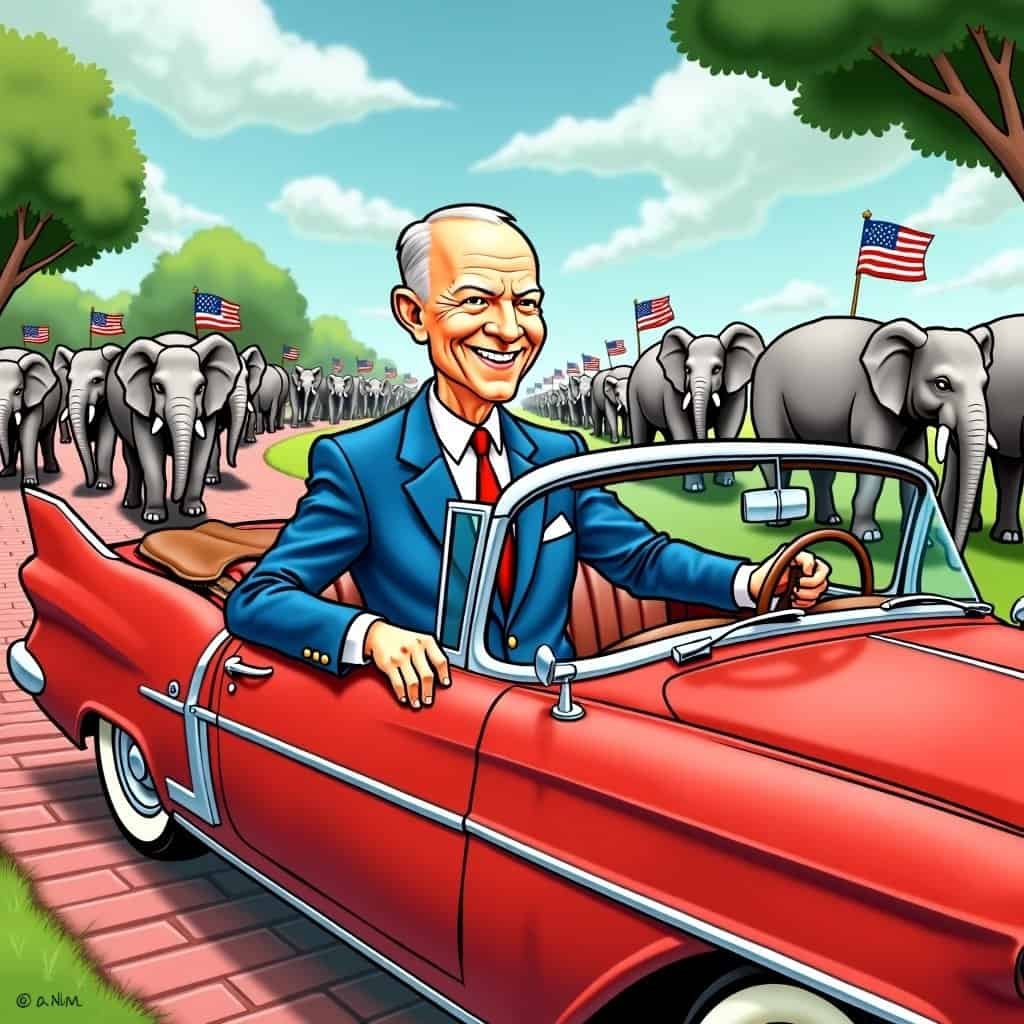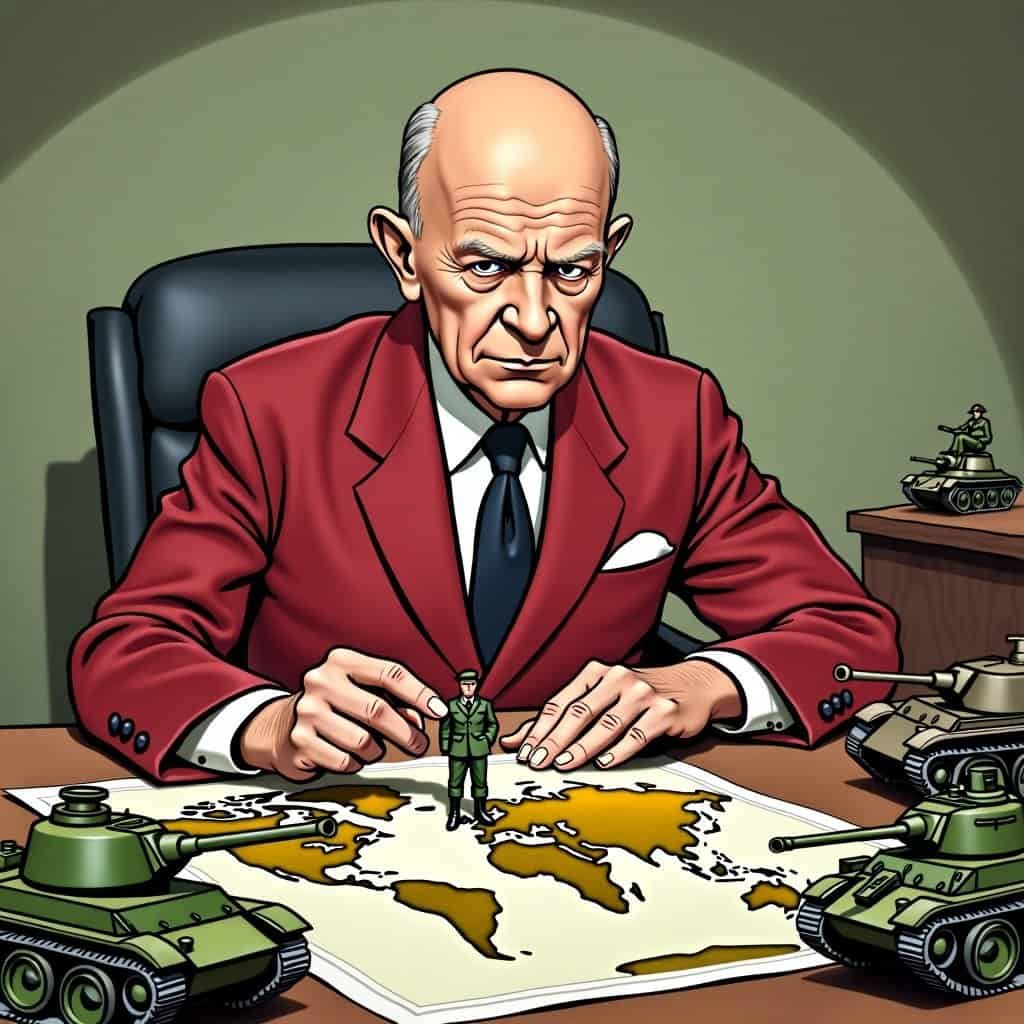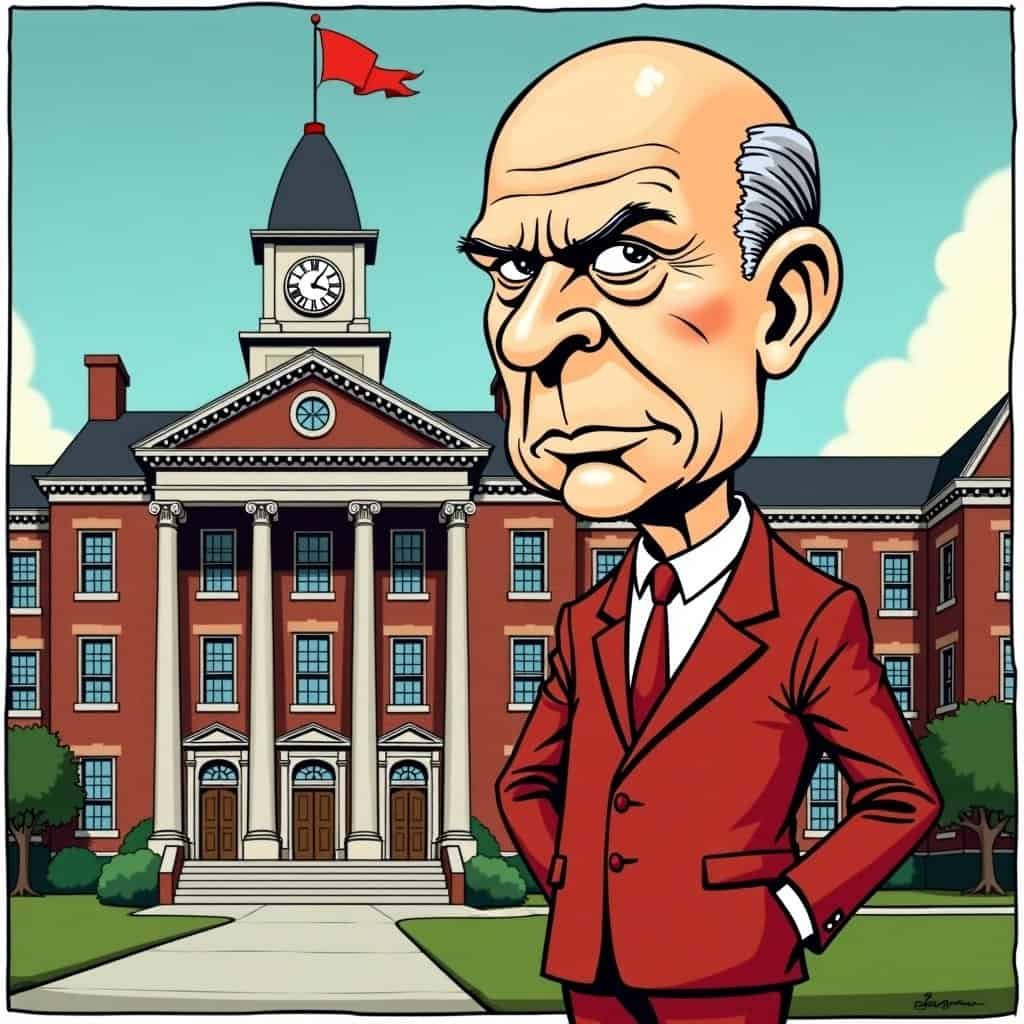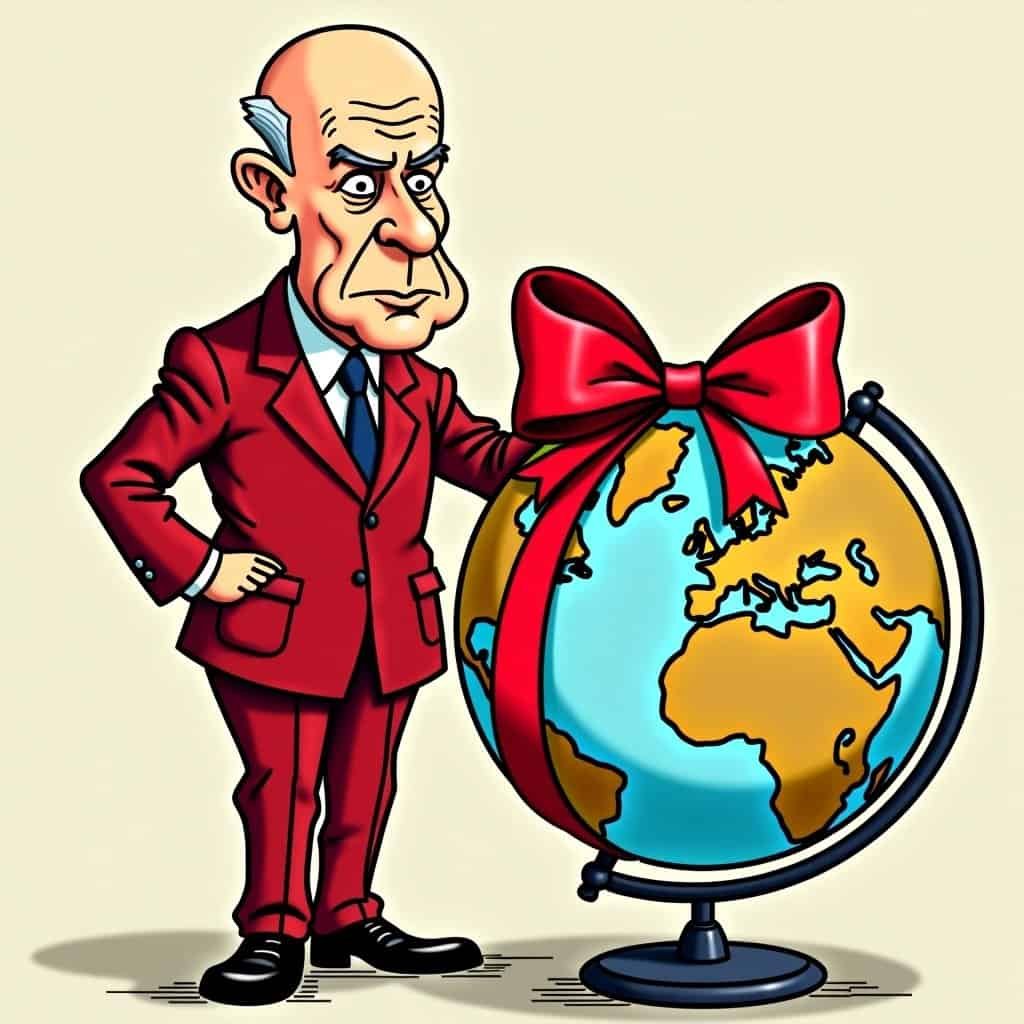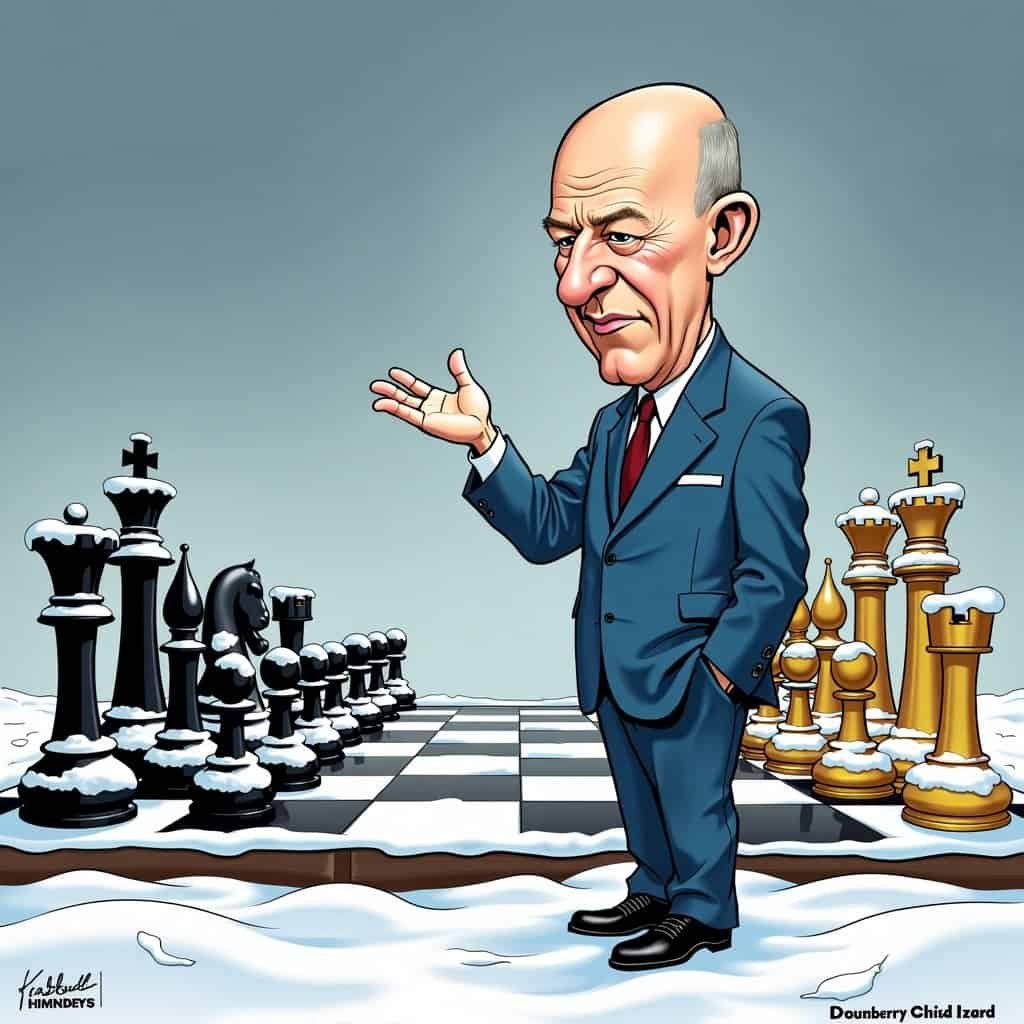In the 1950s, when TV dinners were all the rage and a dollar went a long way, President Dwight D. Eisenhower cooked up a recipe for economic prosperity that was as satisfying as grandma’s Sunday roast. His focus? Growing the economy and keeping it stable without relying too heavily on Uncle Sam’s expanding wallet.
Eisenhower, a humble man with a backbone of steel, believed in trimming government reach like any true conservative would. Taxes, you ask? Ike cut them so skillfully you’d think he was an expert gardener pruning a prized rosebush. By making targeted reductions and keeping the government’s role lean, he freed up valuable economic resources for everyday folks and businesses alike.
Under his watch, America underwent a transformation. It was like the nation switched from watching fuzzy black-and-white TV to enjoying vibrant, crystal-clear color.
Economic Growth Under Eisenhower
Ike had a knack for solving puzzles, and boy, did he have a doozy with post-war economic challenges. Some might say his approach laid the foundation for what we now call the “American Dream.” His leadership created enticing opportunities for companies to reinvest in themselves, cutting unemployment like a hot knife through butter. Jobs multiplied, wages inched upward, and the economic pie grew so large that everyone got a slice.
Eisenhower’s Economic Impact
- ✓ Job Creation: Unemployment rate dropped significantly
- ✓ Wage Growth: Workers saw steady increases in their paychecks
- ✓ Infrastructure: Massive interstate highway system built
- ✓ Innovation: Encouraged business investment and technological advancements
- ✓ Economic Stability: Balanced approach to taxes and spending
Picture this: An era where shiny new interstates connected cities like a patchwork quilt. These roads transported fresh produce, cutting-edge gadgets, and a healthy dose of optimism across the country. Talk about a stroke of genius!
Conservative vs. Progressive Economic Policies
Now, compare that to progressive plans that often sound as grand as your neighbor’s overly ambitious backyard renovation. These liberal policies might seem appealing but often end up feeling like someone’s helping themselves to the cookie jar without asking. High taxes and constant government meddling can plant the seeds for an economic slowdown: the pie shrinks. Fewer jobs, less investment, and an economy about as appetizing as week-old bread.
Think of laws so thick and intervention so frequent that business owners feel as cramped as wearing shoes two sizes too small. Those taxes meant to give everyone a boost didn’t exactly have folks jumping for joy. Businesses, faced with these hefty costs, often pulled back, laid off workers, and tightened wages more than your belt after Thanksgiving dinner. No growth in sight! Surprising? Not really. That’s just what happens when fiscal policy locks potential away like a guard dog with the keys.
Eisenhower’s Economic Legacy
But let’s circle back to our grandfatherly figure of American progress, Ike. By creating an environment where private enterprise could flourish, he sparked prosperity across all income levels, even helping those at the bottom make hay while the sun shone bright.
Eisenhower’s Economic Principles
- Reduce government intervention
- Lower taxes strategically
- Encourage private sector growth
- Invest in infrastructure
- Balance the budget
Sure, the nitty-gritty details matter, but even critics from across the aisle had to tip their hats to the brilliance of it all. Eisenhower showed there are two ways to make toast: burn it with sky-high taxes or gently brown it with balanced economic policies, ensuring everyone starts their day right.
Encouraging investment through tax incentives worked wonders, sparking a resurgence of bold entrepreneurship and innovation that had America buzzing like a beehive in spring.
So next time you find yourself pondering whether conservative economic principles work, take a page from Eisenhower’s book. Trust me, those policies are as satisfying as a slice of homemade apple pie—guaranteed to keep our great nation’s people well-fed, content, and free as birds.
Table of Contents
- Economic Growth Under Eisenhower
- Conservative vs. Progressive Economic Policies
- Eisenhower’s Economic Legacy

